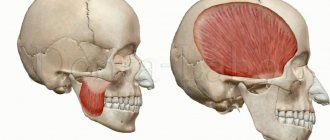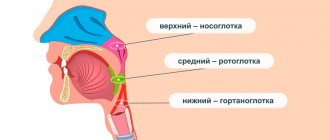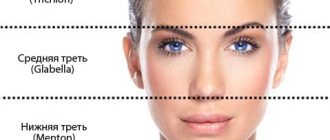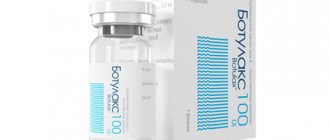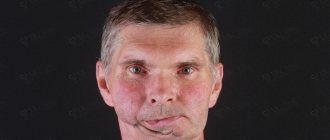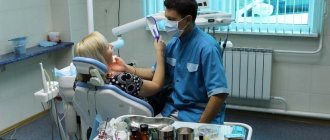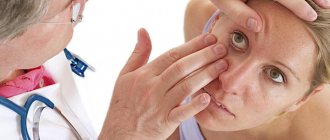- Jaw muscle spasm
- Development of the disease
- Symptoms of TMJ problems
- Diagnostics
- Prevention of hypertonicity of the TMJ muscles
- Prevention of hypertonicity of the TMJ muscles
Spasm of the jaw muscles is called trismus, and can be single or multiple.
The jaw muscles are always toned (in background activity, ready for action). Muscle hypertonicity represents increased activity and tension, with decreased ability to stretch. With mild hypertonicity, a person experiences slight discomfort. In the case of moderate or severe hypertonicity, muscle spasm occurs, accompanied by pain. In difficult cases, the jaw cramps so that the person cannot open the jaw. Muscle spasm under the jaw
there is one-sided and two-sided
There are several causes of jaw muscle spasm. Common causes may be internal diseases of an infectious or neurological nature:
- Neoplasms in the brain of benign and malignant nature.
- Intracranial hemorrhage.
- Meningitis.
- Diseases of the nervous system (stress, depression).
- Tetanus, rabies.
- Anatomical tissue defects.
Local causes are diseases of the maxillofacial area and injuries:
- Inflammatory process of bone tissue (osteomyelitis).
- Cellulitis and abscess.
- Inflammatory process in the soft tissues around wisdom teeth.
- Inflammation of the periosteum.
- Unsuccessful anesthesia during dental surgery on the lower jaw.
- Dislocation, fracture or crack in the lower jaw.
- Arthrosis or arthritis of the TMJ.
- Inflammatory process in the trigeminal nerve.
- Hypothermia or overload of the lower jaw.
- Periodontitis or pulpitis in an advanced stage.
- Incorrect installation of the bracket system or poor-quality prosthetics.
- Sports injuries (common in boxers who use mouthguards, weightlifters who clench their teeth while lifting weights, scuba divers who use an oxygen tank mouthpiece for long periods of time).
It is important to consult a dentist so that he can diagnose such a multifaceted disease as spasm of the jaw muscles.
The dentist will be able to find out the reasons after examination, history taking, and diagnostics.
Development of the disease
A provoking factor appears that causes a single muscle tension. Constant hypertonicity gradually develops into spasm. Pain weakens the muscle over time as the person tends to use the muscle less. The result is a decrease in muscle tone
. Against this background, compensatory tension of the muscle located on the opposite side of the jaw develops.
With muscle pain syndrome, the patient experiences constant pain in the area of the masticatory muscles, which intensifies with movement of the lower jaw. When closing and opening the jaws, a clicking sound is heard in the TMJ. Visually, zigzag deviations of the jaw to the side or forward are observed. Bruxism develops
. Sometimes pain syndrome manifests itself in the upper jaw, sinuses, superciliary arches, and ringing or noise in the ears develops.
Hypertonicity of the masticatory muscles
Causes
The main causes of hypertension are:
- chronic stress and unstable psycho-emotional background;
- flaws in dental treatment (in particular, incorrectly placed fillings);
- missing several teeth;
- postural imbalance, manifested by asymmetry of the shoulders and shoulder blades, different leg lengths and other pathologies of the spine.
Clinical picture
In the absence of treatment, against the background of hypertonicity, dysfunction of the temporomandibular joint (abbr. TMJ) develops, which can accompany myofascial pain syndrome and has pronounced external manifestations - facial asymmetry, visual “weighting” of the lower jaw (it becomes more massive, the oval of the face changes) . Such patients often suffer from bruxism (uncontrolled clenching and grinding of teeth during sleep, during physical activity, stressful situations, etc.).
Characteristic signs of hypertonicity of the masticatory muscles will also be:
- noticeable swelling;
- pathological abrasion and high sensitivity of teeth;
- malocclusion and other dental deformities;
- headaches, including migraines;
- facial pain, spasms.
As a complication against the background of long-term disorders, overstrain of the neck muscles can develop, spreading to the back and resulting negative consequences in the form of poor posture.
Diagnostics
Diagnosis of hypertonicity of the masticatory muscles includes dental and neurological methods:
- palpation examination;
- orthopantomogram;
- teleroentgenogram (abbr. TRG) of the lateral surface of the head;
- axiography;
- electromyography (abbr. EMG) of muscles, etc.
The examination also evaluates clinical signs, including head position, movements of the cervical spine, general expression and level of sensitivity of the face, facial expressions, and others.
Treatment
The main goal of treating hypertonicity of the masticatory muscles is to relax the muscles and eliminate pain. To achieve this, the following methods are used today:
- wearing trainers (during this therapy, the patient first begins to notice manifestations of bruxism, and then learns to control them, keep the tongue in the correct position; thanks to the trainers, the teeth are protected from damage, and hypertonicity is gradually relieved over time);
- shock wave therapy (physiotherapy stimulates metabolic processes at the cellular level, improves tissue nutrition, eliminates pain);
- reflexology, acupuncture, massage, osteopathy (targeted effects on the causes of postural imbalance through acupuncture, massage and other techniques).
The emotional background plays a big role, which also requires correction. Sedentary work needs to be diluted with physical activity, doing special relaxing exercises every morning, spending more time in the fresh air, trying to be less nervous and eliminating stress factors as much as possible. The joint work of the doctor and the patient will achieve the desired result in the shortest possible time. With complex therapy, the likelihood of relapse is minimal.
Symptoms of TMJ problems
The disease manifests itself with the following symptoms:
- Painful sensations occur on palpation.
- When opening the mouth, the patient feels a sharp pain.
- Due to pain, a person experiences difficulty eating and communicating.
- Breathing through the mouth is difficult.
- To the touch, the chewing muscles are compacted and slightly increased in volume.
- Facial asymmetry with unilateral spasm.
- Low-grade fever.
- Headache.
The gnathologist
carries out differential diagnosis with a fracture or dislocation of the jaw, as well as with an infectious lesion.
There are three degrees of disease progression: mild (the patient is able to open his mouth four centimeters), moderate (the mouth opens two centimeters), severe (the patient cannot open his mouth more than one centimeter).
The tension is off the charts
Employees of the Revitonika rejuvenation school, led by Anastasia Dubinskaya, spent 3 years studying the tone of the facial muscles of 151 women from 36 to 50 years old at the Laboratory of Medical Psychology of the Moscow Scientific and Practical Center for Medical Rehabilitation, Rehabilitation and Sports Medicine of the Department of Health. They conducted a study of the most emotionally sensitive facial muscles: the corrugator muscle, the masseter muscle, the depressor anguli oris muscle, and the nasal muscle.
And the results are disappointing: if we consider these muscles separately, each of them is tense in 3 out of 4 women (and even more often in percentage terms!). And this is the minimum: many women have spasms in several muscles at once.
How do you know if you are one of this unlucky number? In her lecture “Top 10 Causes of Muscle Hypertonicity” on the Revitonics YouTube channel, Anastasia Dubinskaya suggests taking 2 quick and simple tests that will help determine the presence of facial hypertonicity.
Diagnostics
The patient experiences pain from jaw movement. In this situation, it is necessary to consult a doctor as soon as possible to begin treatment. It is necessary to find out how to relieve jaw muscle spasm in order to restore health.
During the examination and history taking, the doctor observes the patient, paying attention to his posture and head tilt, neck movements, facial expressions, and facial expressions. The state of the muscles during speaking and swallowing is determined. The presence of the corneal reflex is checked, and the amplitude of movements of the lower jaw is determined. The doctor finds out whether there are problems with the spine.
The patient is examined using diagnostic equipment, an occlusiogram is prescribed to determine the type of bite, and its dynamics and statics are measured. If necessary, an X-ray of the TMJ and an orthopantomogram of the jaws are prescribed, and an electromyographic study is performed.
Principles of treatment of muscle hypotonia
Therapeutic tactics depend on the underlying disease that led to the occurrence of muscle hypotonicity. Modern medicine offers many effective techniques aimed at treating hypotension. The most commonly used types of conservative therapy are:
- massage;
- physiotherapeutic procedures;
- physiotherapy.
In some cases, children are prescribed medications whose action is aimed at improving blood circulation and stimulating the development of the nervous system.
The first therapeutic gymnastics classes are conducted by a qualified specialist. He explains to the mother what exercises she can do with the child at home in the future. The maximum positive effect is achieved by combining gymnastics with massage and exercises in the pool or bath.
If manifestations of decreased muscle tone are detected in a child, it is necessary to urgently contact a competent specialist. The pediatric neurologist at the Edkarik clinic in Kaliningrad uses the latest developments and techniques that have proven their effectiveness in practice in the treatment and rehabilitation of young patients.
Prevention of hypertonicity of the TMJ muscles
Preventive measures against hypertonicity of the lower jaw muscles will help prevent the disease with an integrated approach. It is much easier to follow the general recommendations of doctors than to face a painful spasm of the TMJ. Prevention includes the following activities:
- Preventive visits to the doctor every six months.
- Careful systematic oral hygiene.
- Treatment of caries at its first symptoms.
- Orthodontic treatment for malocclusion pathologies.
- Disinfection of food products.
- Antitetanus therapy for animal bites.
- A set of necessary vaccinations.
- Do not open your mouth wide (jaw dislocations often occur when trying to bite off a large fruit).
- Do not overuse solid foods and do not chew nuts with your teeth.
- Avoid stressful situations, react less to stress.
Video about bruxism and hypertonicity of the masticatory muscles.
Tension of the platysma muscles visually makes the oval heavier, “pulling” the soft tissue down, also leading to a change in the shape of the face and asymmetry. The cause of the resulting defects - muscle hypertension - is corrected with botulinum therapy. Changes in muscle activity in the face and body can be associated with poor posture, curvature of the spine, and the “short leg” symptom. In these situations, the formation of a beautiful oval is carried out jointly with specialists in related specialties: dentists, neurologists, orthopedists.
An increase in the width and/or volume of the chin can lead to a visual reduction in the size of the lips or a change in the visualization of their shape. Therefore, correction of the chin area is most often carried out together with lip correction, simultaneously or in stages.
It has been noted that at different periods of life, chronological changes in tissues of close relatives are very similar, which in some cases can be one of the guidelines for the doctor when planning a course of procedures. For example, if in a young patient a slight heaviness of the mental area becomes noticeable due to an increase in the volume of adipose tissue, and the mother and/or grandmother already have a pronounced fat trap in the submental area, then the necessary set of measures should be taken in advance to correct it and prevent the further development of pronounced visual aesthetic defect.
Dividing the face into upper, middle and lower thirds is convenient in practical work for understanding the need to place individual zonal dominant accents and their influence on the perception of the image as a whole. And the lower third of the face is very important in this regard.
The most common patient complaints regarding changes in the lower third of the face:
- the appearance of wrinkles;
- increased expression of physiological folds;
- protruding bones;
- visually detectable vasodilation;
- drooping corners of the mouth and decreased lip volume;
- changing the shape of the chin;
- soft tissue ptosis;
- deformation of the oval of the face.
The most common wishes of patients for correction:
- provide lifting of soft tissues of the face;
- reduce the depth of folds and wrinkles;
- improve the oval of the face;
- change (reduce or increase) the width of the face;
- raise the corners of the mouth;
- adjust the shape of the lips and chin;
- harmonize the appearance (for example, create a more feminine, sensual image: for this, the chin is rounded during the modeling process to remove sharpness. When creating a male brutal image, the facial sculpture, on the contrary, is sharper and wider).
The desire to look young and well-groomed is common to both men and women. Youth and well-groomed skin are, first of all, good skin quality: uniform color, smooth texture, fit, absence of wrinkles, folds, neoplasms and pathologically dilated blood vessels. One of the signs of youth is also the well-defined angles of the lower jaw. If the patient has excess subcutaneous adipose tissue and/or severe ptosis, this important feature is “erased.”
In practical work, the doctor should take into account the characteristics of the chin area. The skin here is thickened and inactive due to fibrous strands going deep, penetrating the subcutaneous fatty tissue. Often with involutional changes there is a significant increase in skin pattern and hyperkeratosis. Therefore, before moving on to beauty, you need to work on the quality of your skin. For this purpose, for example, laser and radio wave methods are used, combining them with injection biorevitalizing procedures. In the presence of pathologically dilated vessels or age spots - phototechnology.
If the tissues are thinned, then muscle activity is reflected on the skin in the form of “pits and tubercles”, the surface of the skin looks “shrunken”, dynamic folds are formed, which subsequently turn into deep static ones. In such situations, botulinum therapy is optimal to correct unwanted muscle activity. And only at the very end, subdermal injection of filler is performed in order to smooth out folds and improve the aesthetic perception of this area.
Consequences of jaw spasm
Trismus is unpleasant for a person not only due to pain. When opening and closing the mouth is painful, the normal process of eating is disrupted and the gastrointestinal tract suffers. When the jaw spasms, breathing is impaired, which leads to constant oxygen starvation of the brain and headaches. This affects the composition of the blood and the functioning of the cardiovascular system.
Trismus caused by infections or tumors causes serious health problems. In this case, long-term serious treatment is required. In the initial stages, pain is completely relieved. For systemic diseases, when trismus is a secondary symptom, complex therapy is necessary.
Increased muscle tone in an adult
In an adult, muscle tone is observed as a consequence of disruption of the nervous system; this is one of the indicators of the presence of neurological diseases. There are 2 types of increased tone: spastic (localized) and rigid (applies to all muscles at the same time). Hypertonicity can be caused by:
- demyelinating neurological diseases such as multiple sclerosis;
- pathological processes in the vessels of the brain and spinal cord (stroke);
- cerebral palsy;
- various brain or spinal cord injuries;
- disruption of the functioning of nerve impulses.
With a spastic type of tone, disruptions in the functioning of nerve centers and pathways are observed, and with a rigid type, pathologies of the brain or spinal cord are observed.
Hypertonicity in adults is a sign of a serious neurological disorder resulting from the presence of severe diseases of the nervous system. In this case, it is most rational to use complex therapy. Along with traditional medicine, osteopathy can come to the rescue, which significantly alleviates the patient’s condition. Osteopathic techniques are very gentle, they bring the patient a feeling of relaxation, tranquility, and warmth. With his hands, an osteopathic doctor can improve muscle function, blood flow, and influence bones and joints, while he fights not the clinical manifestations of the disease, but its cause. The osteopath triggers the necessary mechanisms that, like a clockwork, normalize the functioning of the entire body as a whole.
